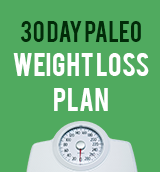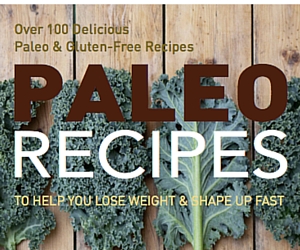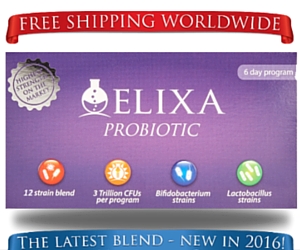The diet of traditional cultures teaches us the importance of fat soluble vitamins, and this includes vitamin K2 – a critical component for bone and cardiovascular health.
About Vitamin K
Vitamin K is a fat soluble vitamin named after the initial from the German word Koagulation, and supports the maintenance of normal bones and normal blood coagulation.
In nature, vitamin K is found in two forms: vitamin K1 (phylloquinone) in leafy, green vegetables, and vitamin K2 (menaquinone) in organ meats, egg yolks, and dairy products.
The majority of vitamin K found in the body is in the K1 form, estimates suggest that it accounts for up to 90% of the total figure. However, of the three types of vitamin K, the form that has received the highest level of interest from researchers in recent years is K2.
Discovery of Vitamin K2
In the 1930’s Dr. Weston A. Price identified the presence of a fat soluble substance (other than vitamins A and D which were already known at the time) which he called ‘Activator X’. He found this substance in fish eggs, egg yolks, organ meats and particularly in the butterfat of cows eating the rapidly growing green grass in spring and autumn.
From this nutrient-dense butterfat, Dr. Price created an oil rich in Activator X which he used in his clinical practice. This ‘high vitamin butter oil’ is the critical adjunct to taking a vitamin A and D rich supplement like cod liver oil because it directs the minerals to their proper place.
The ‘Activator X’ that Dr. Price used had a remarkable healing effect on bones and teeth. Since he was a dentist, he was able to document the teeth before the treatment and then again after the treatment with Activator X.(1)
Food sources of Vitamin K2
While vitamin K1 mostly is found in leafy greens, animal products are the best food source of vitamin K2.(2) Animals that have been raised on grass and green forage are the best food sources of K2 (MK-4). This is because animals have a unique ability to synthesize vitamin K2 from the vitamin K1 they obtain from grass. For example, the butterfat of cows that have been eating the rapidly growing green grass of spring and autumn, as discovered by Dr. Price’s research of samples of grass and the corresponding butterfat.
Good animal sources of Vitamin K2
- butter and ghee from grass-fed cows
- high-vitamin butter oil – Green Pastures or Nutrapro
- goose fat and goose liver, and to a lesser extent other livers such as chicken livers
- cheeses made with raw milk
- fermented or aged cheeses – Gouda has high levels of K2, brie made from raw milk is also a good source (you can buy both of these in Sainsbury’s and Waitrose)
- egg yolks from free-range/pasture-raised chickens
- kefir made with milk from grass-fed cows
- emu oil – the Weston Price Foundation found that each 1g capsule of Walkabout Emu Oil contains approximately 3.6 mcg of K2 (100% as MK-4).
Emu oil contains significantly more vitamin K2 than pastured butter with each 100 grams containing 360 mcg (24 times more than pastured butter), so capsules of high vitamin butter oil would contain a fraction of the K2 as compared with capsules of the emu oil based on this data. Emu oil is also a fantastic source of omega 3, 6 and 9, and contains small amounts of Vitamin D3, Vitamin E and Conjugated Linoleic Acid.
MK-7 is the best vegetable source of K2 which is found in fermented soy beans or natto. The K2 is actually synthesized by bacteria during fermentation. There may be a texture and smell issue for some, but the Japanese eat it and they have low levels of heart disease.
Good vegetable sources of Vitamin K2
- fermented soy beans
- natto
- sauerkraut (3)
Health benefits
Osteoporosis and heart disease may seem unconnected, however on the surface, they do share a few common features – both conditions develop with age. It’s rare for someone to have either condition at age 30, but both are common from the age of 60 onwards. Both conditions don’t develop overnight, but require many years to emerge. Just as osteoporosis requires decades to develop, coronary atherosclerosis also accumulates bit by bit over decades, starting in a person’s 20s (or earlier) and building gradually until a heart attack or other catastrophe occurs.(4)
Vitamin K2 may be better for keeping your bones strong and limiting your risk for osteoporosis than vitamin K-1, according to an article published in ‘Alternative Medicine Review’ in March 2005. Women need 90 micrograms per day of vitamin K for proper blood clotting, and men need 120 micrograms per day.
The osteocalcin protein that vitamin K2 activates also triggers the activation of another protein called matrix gla protein (MGP), which is responsible for removing excess calcium that can accumulate in soft tissues such as arteries and veins. This role takes on significant importance considering that about 20% of atherosclerotic plaques are comprised of calcium, from the early to the more advanced stages of heart disease development.(5)
Many of the best food sources of vitamin K2 are high in saturated fat, which has been accused of contributing to heart disease (without adequate evidence to support this claim). A rigorous meta-analysis, including 347,747 subjects followed for up to 23 years, published in the ‘American Journal of Clinical Nutrition’ (January 2010 issue) clearly showed that there’s a lack of significant evidence for blaming saturated fats for the development of coronary heart disease and cardiovascular diseases. Accordingly, subjects in the Rotterdam Study with the highest vitamin K2 intake consumed more total and saturated fats and also had lower total cholesterol values and higher levels of heart-protective HDL cholesterol. Therefore, dieticians shouldn’t be afraid to recommend foods high in vitamin K2 despite their higher saturated fat content while monitoring their clients’ cardiovascular risk profile, especially if they emphasize high-quality, grass-fed and pastured animal sources.(6)
Useful links
- Complete list of foods that contain vitamin-k http://www.livestrong.com/article/242314-complete-list-of-foods-that-contain-vitamin-k/
- Protecting Bone and Arterial Health with Vitamin K2 http://www.lifeextension.com/magazine/2008/3/Protecting-Bone-And-Arterial-Health-With-Vitamin-K2/Page-01
- Vitamin K2: Everything You Need to Know http://authoritynutrition.com/vitamin-k2/
References
- Rheaume-Bleue K. Vitamin K2 and the Calcium Paradox: How a Little-Known Vitamin Could Save Your Life. 1st ed. Ontario, Canada; Wiley: 2011.
- Data published in the January 2006 issue of the Journal of Agricultural and Food Chemistry
- Food sources for vitamin K2. Livestrong.com, 21 April 2013
- Protecting Bone and Arterial Health with Vitamin K2 www.lifeextension.com, March 2008
- Rheaume-Bleue K. Vitamin K2 and the Calcium Paradox: How a Little-Known Vitamin Could Save Your Life. 1st ed. Ontario, Canada; Wiley: 2011.
- Vitamin K2 — ‘A Little-Known Nutrient Can Make a Big Difference in Heart and Bone Health’ by Aglaée Jacob, MS, RD, CDE – Today’s Dietitian, Vol. 15
DITCH THE DETOX & TRANSFORM YOUR BODY FOR 2016!
Lose Weight & Feel Great With Our 30 Day Paleo Plan From £1/Day
Try the Next Generation of Probiotics








You must be logged in to post a comment.